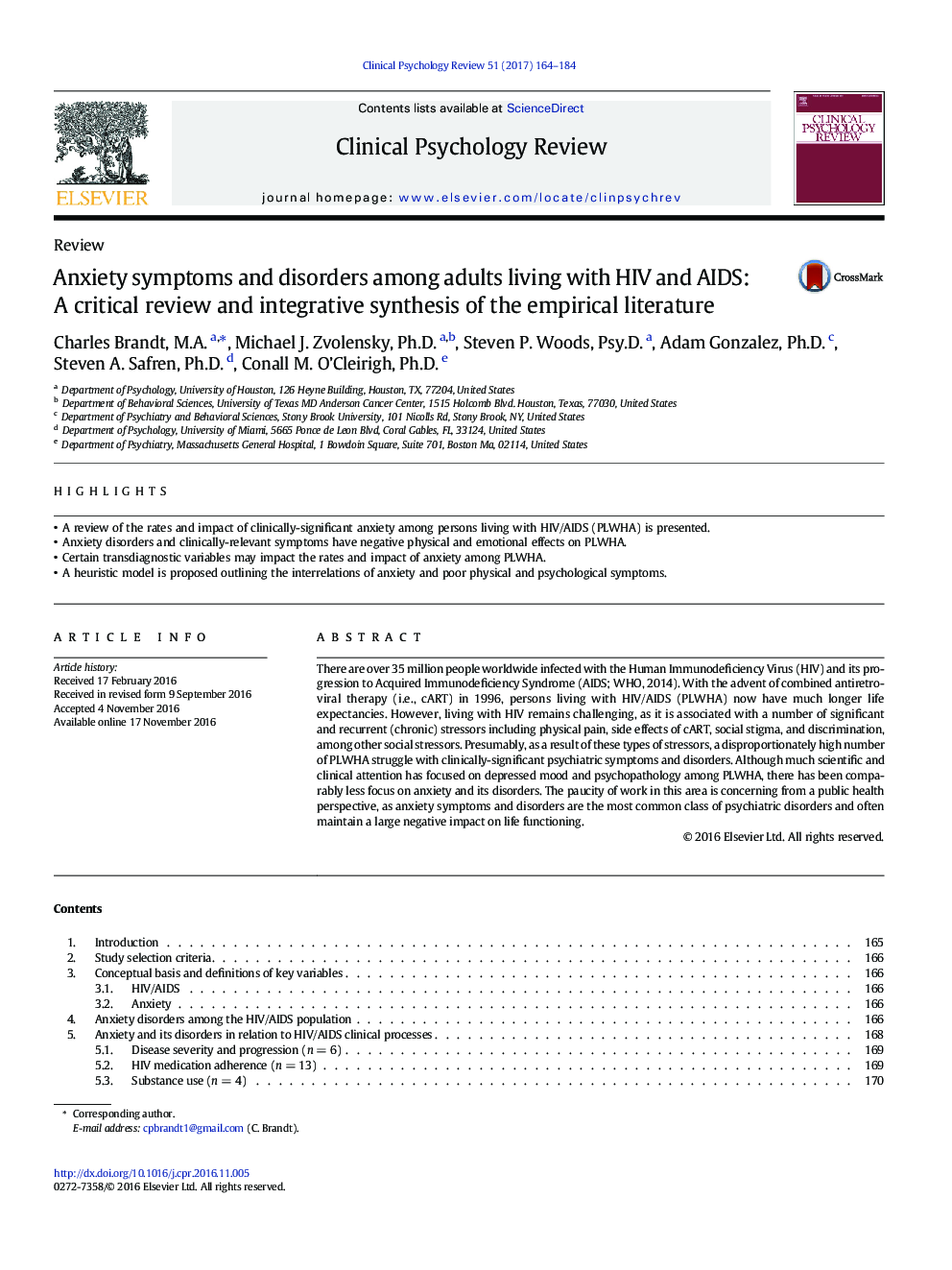| Article ID | Journal | Published Year | Pages | File Type |
|---|---|---|---|---|
| 5038467 | Clinical Psychology Review | 2017 | 21 Pages |
â¢A review of the rates and impact of clinically-significant anxiety among persons living with HIV/AIDS (PLWHA) is presented.â¢Anxiety disorders and clinically-relevant symptoms have negative physical and emotional effects on PLWHA.â¢Certain transdiagnostic variables may impact the rates and impact of anxiety among PLWHA.â¢A heuristic model is proposed outlining the interrelations of anxiety and poor physical and psychological symptoms.
There are over 35 million people worldwide infected with the Human Immunodeficiency Virus (HIV) and its progression to Acquired Immunodeficiency Syndrome (AIDS; WHO, 2014). With the advent of combined antiretroviral therapy (i.e., cART) in 1996, persons living with HIV/AIDS (PLWHA) now have much longer life expectancies. However, living with HIV remains challenging, as it is associated with a number of significant and recurrent (chronic) stressors including physical pain, side effects of cART, social stigma, and discrimination, among other social stressors. Presumably, as a result of these types of stressors, a disproportionately high number of PLWHA struggle with clinically-significant psychiatric symptoms and disorders. Although much scientific and clinical attention has focused on depressed mood and psychopathology among PLWHA, there has been comparably less focus on anxiety and its disorders. The paucity of work in this area is concerning from a public health perspective, as anxiety symptoms and disorders are the most common class of psychiatric disorders and often maintain a large negative impact on life functioning.
